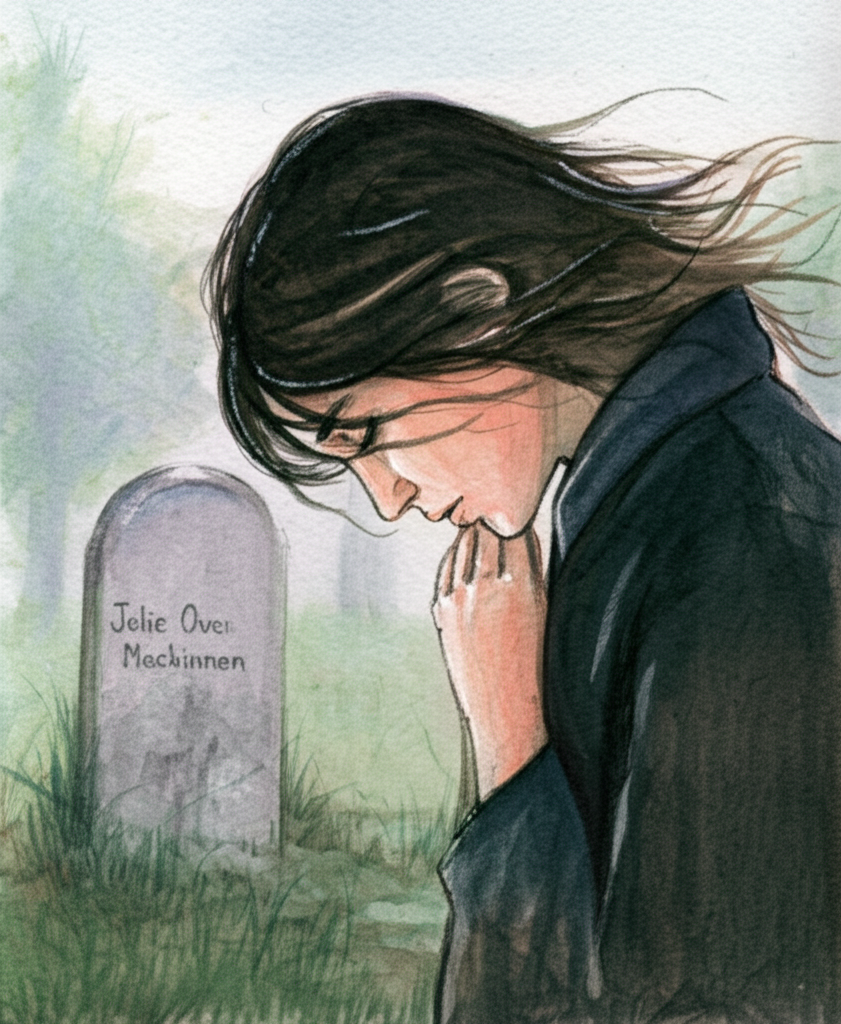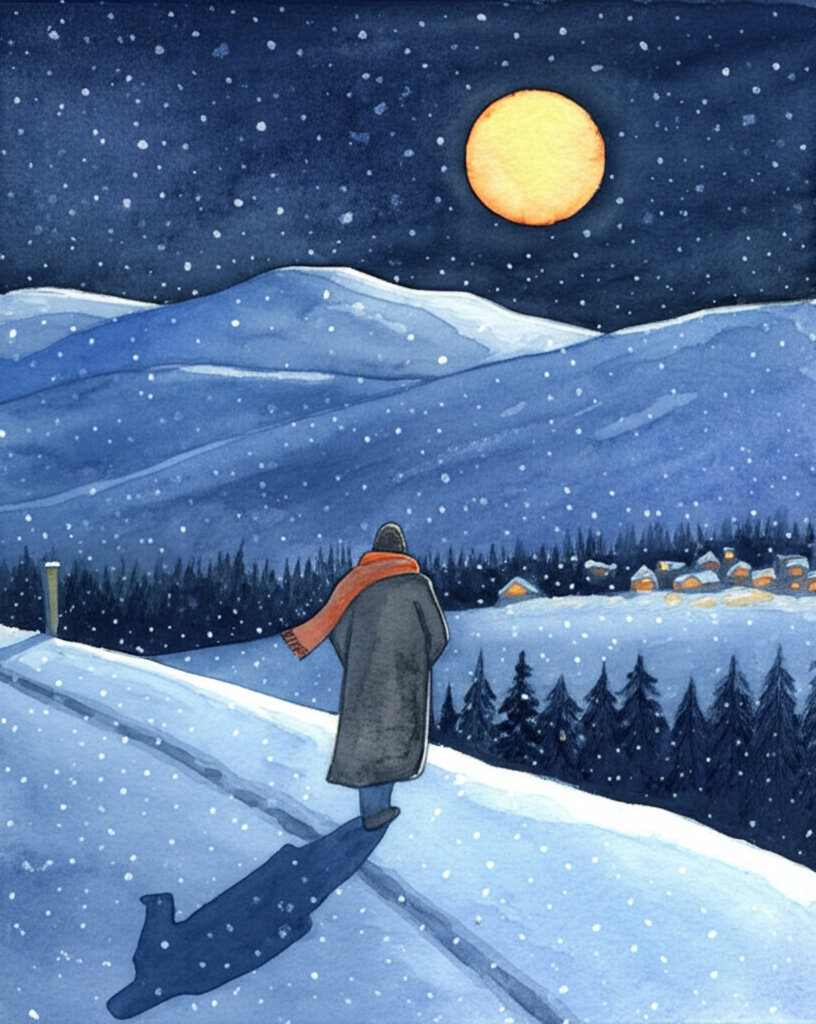
It was a super chilly day, and as the moon popped up over the big, snowy mountains, I could see that some snow was still on the roads in our town. I would have loved to be snuggled in bed with a book and a warm water bottle, but I promised my friends, the Kapadias, I’d go to their party, and I didn’t want to be rude. So, I put on two sweaters, my favorite football scarf, and a big coat, and headed out into the moonlight.
It was a little over a mile to the Kapadias’ house, and I was about halfway there when I saw a girl standing in the middle of the road.
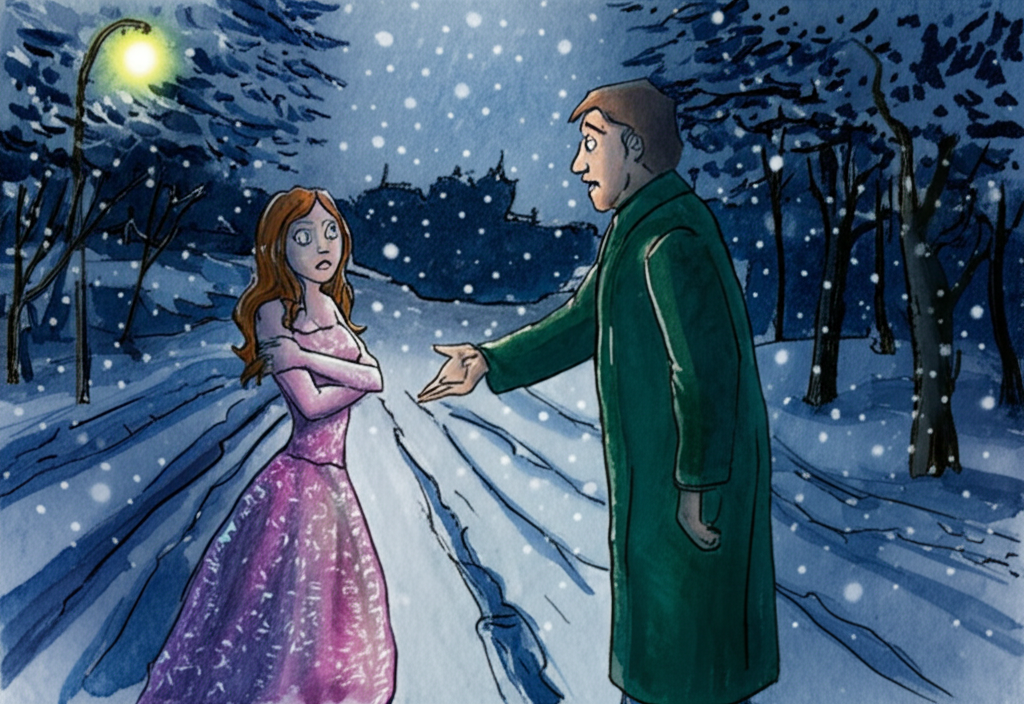
She looked like she was maybe sixteen or seventeen. She had a bit of an old-fashioned look – long hair down to her waist, and a sparkly dress, pink and purple, that reminded me of pictures in my grandma’s photo album. When I got closer, I saw she had really pretty eyes and a sweet smile.
‘Good evening,’ I said. ‘It’s a freezing night to be out.’
‘Are you going to the party?’ she asked.
‘That’s right! And I can see you’re going too, with that beautiful dress. Come on, we’re almost there.’
She walked beside me, and soon we could see the bright lights of the Kapadias’ house shining through the trees. The girl told me her name was Julie. I hadn’t seen her before, but I hadn’t been in town for very long.
There were lots of people at the party, and nobody seemed to know Julie. Everyone thought she was my friend. I didn’t say they were wrong. She probably just felt lonely and wanted to make friends. And she was definitely having fun! I didn’t see her eat or drink much, but she went from group to group, talking, listening, and laughing. When the music started, she danced and danced, by herself or with others. She just loved the music!
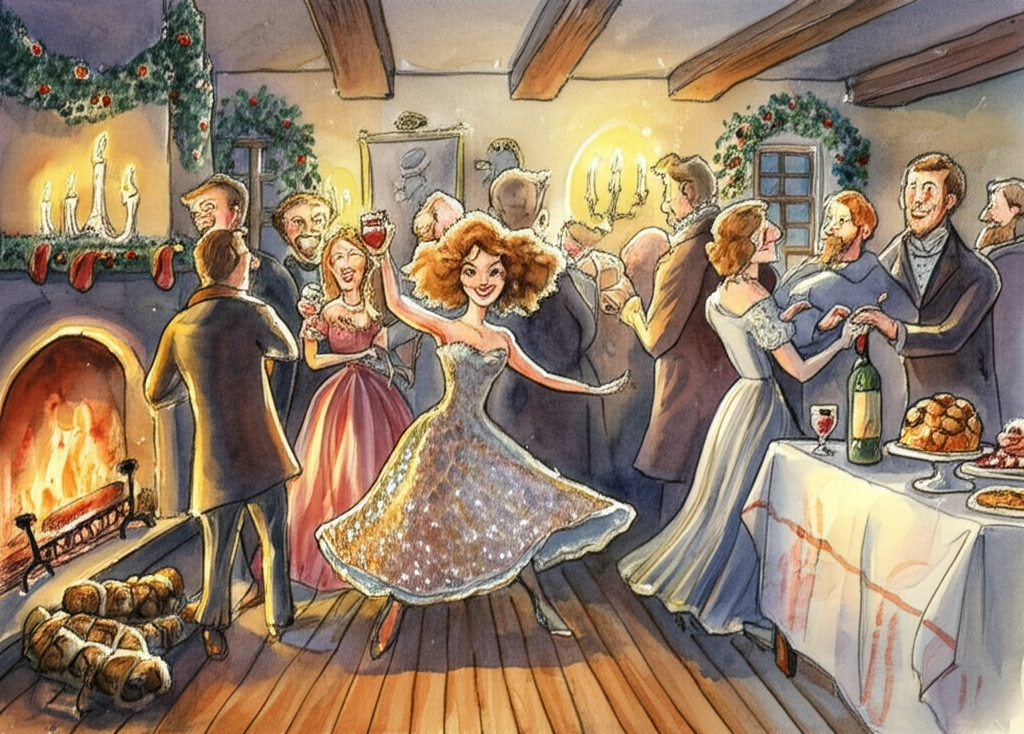
It was almost midnight when I decided to leave. I had drunk a lot of punch, and I was sleepy. As I was saying goodnight to the Kapadias and wishing everyone a happy holiday, Julie took my arm and said she was going home too.
When we were outside, I asked, ‘Where do you live, Julie?’
‘At Wolfsburn,’ she said. ‘Way up on top of the hill.’
‘It’s really windy,’ I said. ‘And even though your dress is pretty, it doesn’t look very warm. Here, take my coat. I’m wearing lots of layers.’
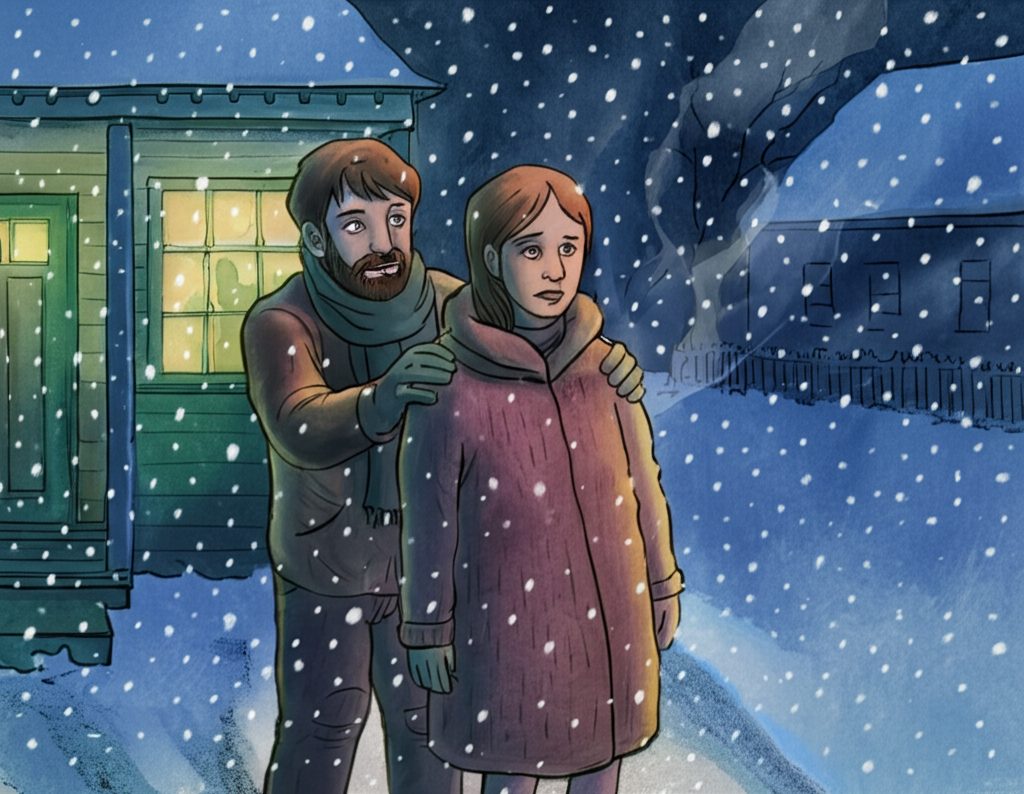
She didn’t say no, and let me put my coat around her shoulders. Then we started walking home. But I didn’t have to walk her all the way. At about the same spot where I first saw her, she said, ‘There’s a shortcut from here. I’ll just climb up the hill.’
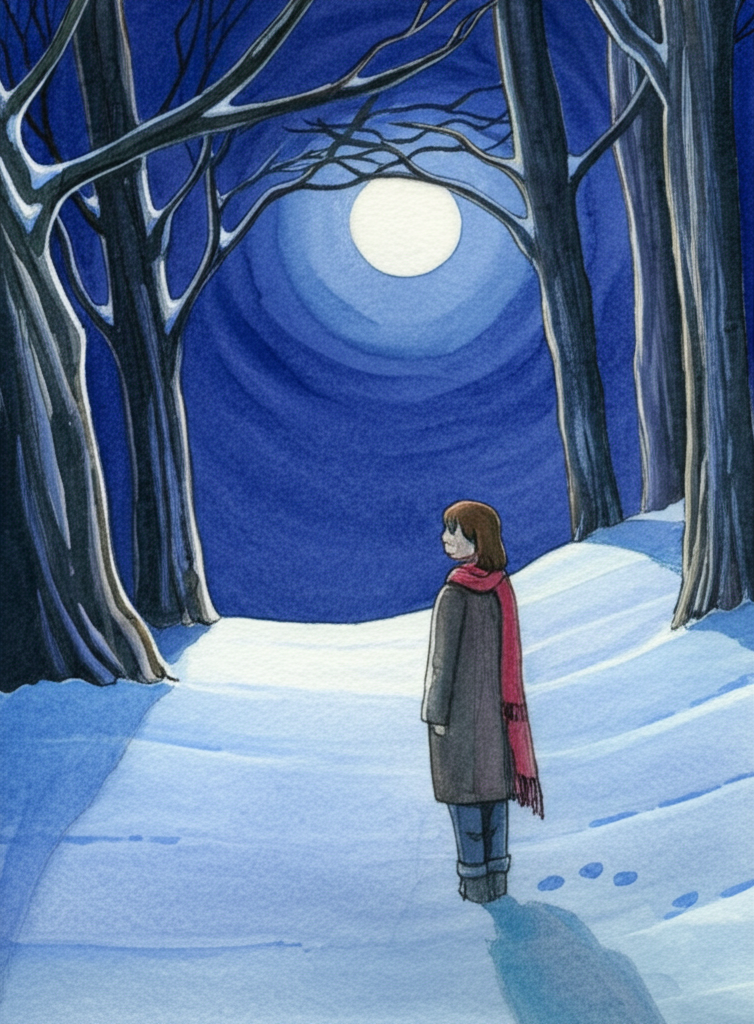
‘Do you know it well?’ I asked. ‘It’s a really small path.’
‘Oh, I know every rock on the path. I use it all the time. Plus, it’s a super bright night.’
‘Okay, but keep the coat,’ I said. ‘I can get it tomorrow.’
She hesitated for a second, then smiled and nodded. Then she disappeared up the hill, and I went home alone.
The next day, I walked up to Wolfsburn. I crossed a little stream, which was probably how the house got its name, and went through an open gate. But the house wasn’t really there anymore. It was just a broken old building, a pile of stones, a broken chimney, and some old pillars where a porch used to be.
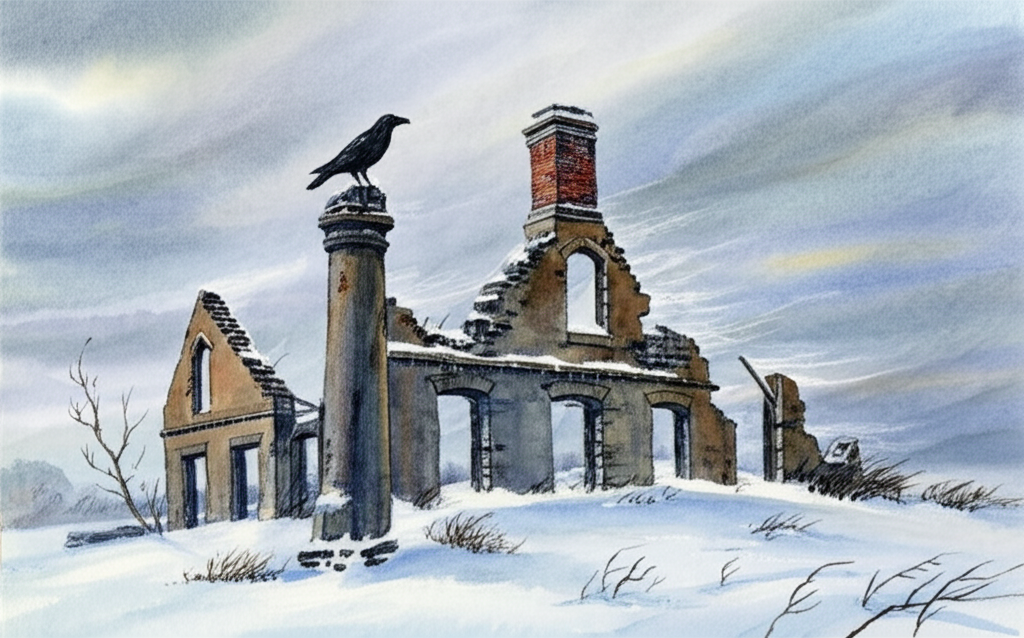
Did Julie play a trick on me? Or did I find the wrong house?
I walked over to the mission house where the Taylors lived and asked Mrs. Taylor if she knew a girl named Julie.
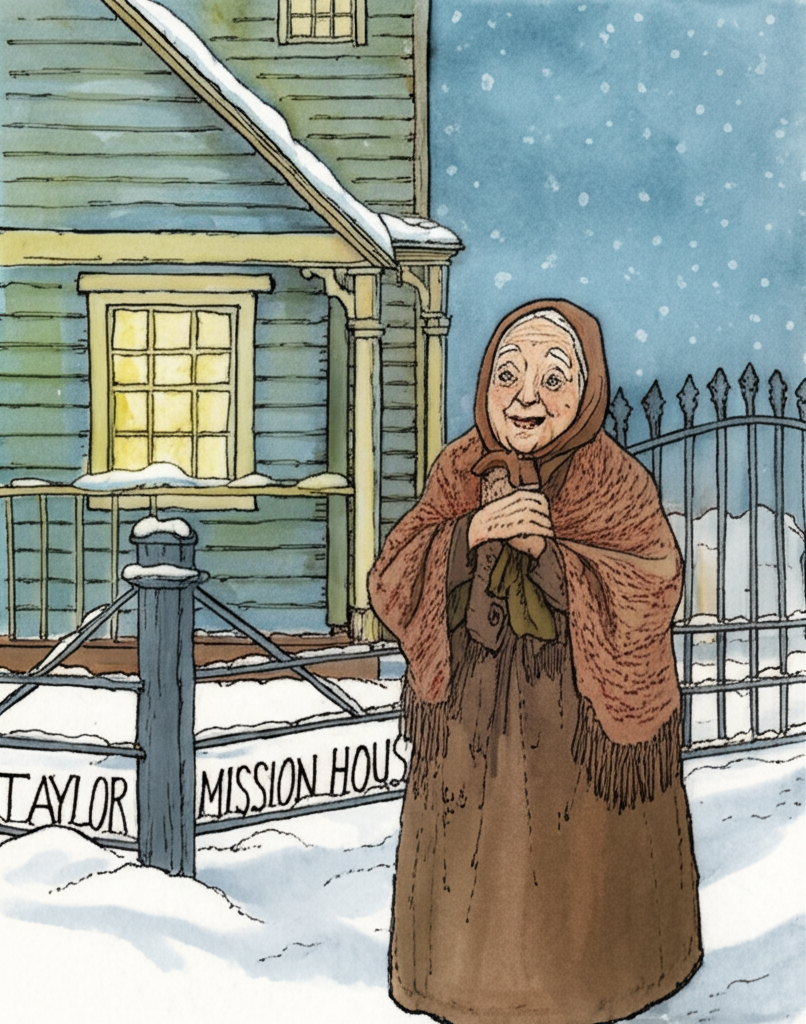
‘No, I don’t think so,’ she said. ‘Where does she live?’
‘At Wolfsburn, I was told. But the house is just a ruin.’
‘Nobody has lived at Wolfsburn for over forty years. The Mackinnons lived there. They were one of the first families here. But when their daughter died…’ She stopped and looked at me strangely. ‘I think her name was Julie… Anyway, when she died, they sold the house and left. Nobody ever lived there again, and it fell apart. But it couldn’t be the same Julie you’re looking for. She was very sick a long time ago. Her grave is in the graveyard, just down the road.’
I thanked Mrs. Taylor and slowly walked down the road to the graveyard. I didn’t really want to know any more, but I felt like I had to.
It was a small graveyard under the trees. You could see the snowy mountains in the bright blue sky. The graveyard was for people who used to live here a long time ago – soldiers, business people, and their families.
It didn’t take me long to find Julie’s grave. It was a simple stone with her name on it:
Julie Mackinnon 1923-39 ‘With us one moment, Taken the next, Gone to her Maker, Gone to her rest.’
Even though it had rained a lot over the years, the stone looked new.
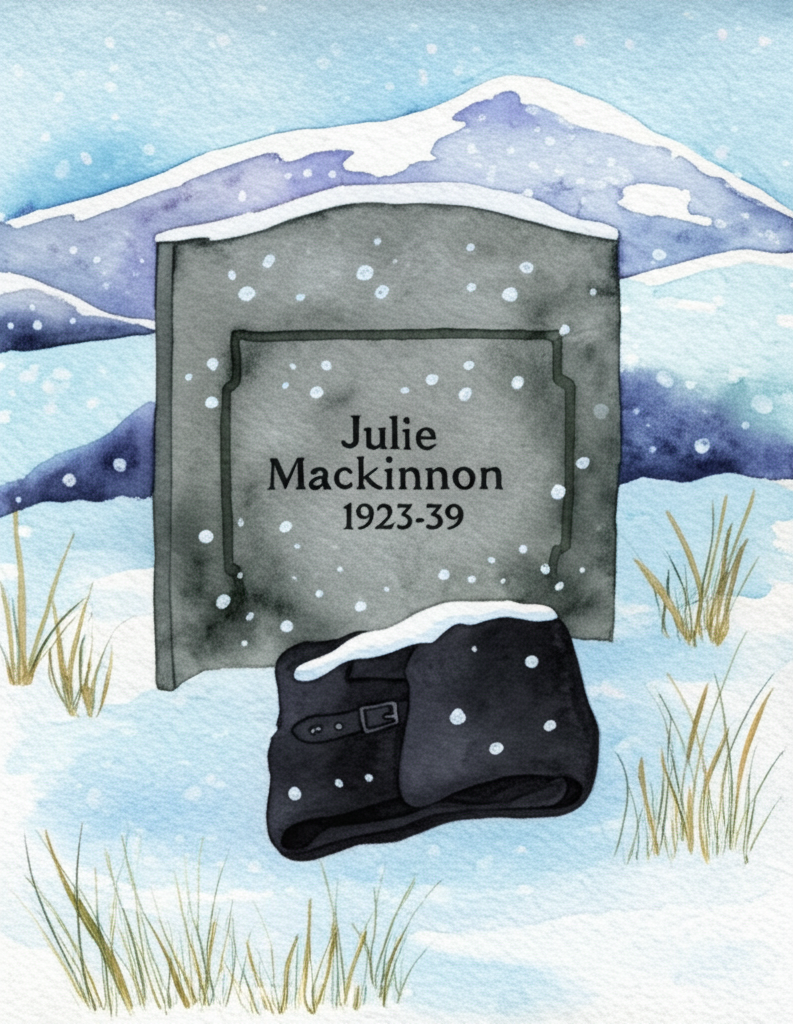
I was about to leave when I saw something familiar behind the stone. I walked around to see what it was.
My coat was folded neatly on the grass.
No thank-you note. But I felt something soft brush against my cheek, and I knew someone was trying to say thank you.
